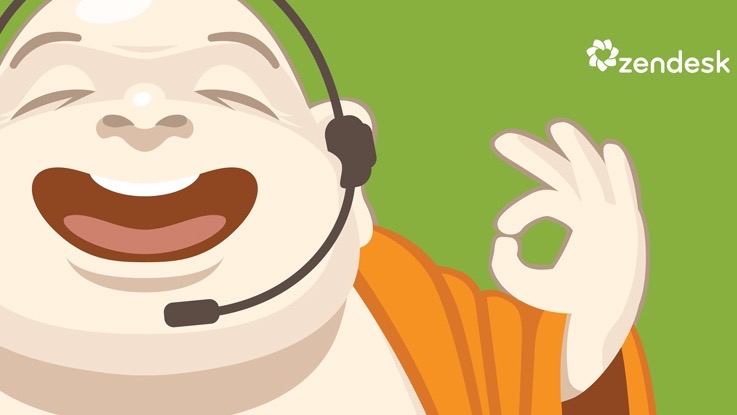 It’s late September and Morten Primdahl, Zendesk’s CTO, has flown into India for a week of conferences and meetings with journalists to roll out the opening of the company’s office in the country.
It’s late September and Morten Primdahl, Zendesk’s CTO, has flown into India for a week of conferences and meetings with journalists to roll out the opening of the company’s office in the country.
He explains that India is the customer service software company’s biggest focus for 2017. Why? Because of its businesses of many sizes, fast-growing economy, and an increasing awareness of why good customer service is necessary.
“India is our top priority for 2017,” Morten says.
The new office will be led by KT Prasad, who is also Zendesk’s country sales director in India. Sandie Overtveld, Zendesk’s vice president of sales for APAC, has arrived from Singapore and also joins us at the meeting.
Small start
Zendesk had its beginnings in a loft in Copenhagen, Denmark in 2007.
“It started off with a year-and-a-half of building our product,” Morten says. “Customer service was rudimentary before that – it was really terrible.”
Startups were new to Denmark and there wasn’t much support for those building companies – much less investors. “Funding in Denmark was nonexistent,” Morten says. “We lived off nothing for two years. We didn’t know much about project organization either – how do you structure managers? Vice presidents? And still give them freedom to be creative?”
“If something doesn’t work, you should throw it out and start over.
But with good feedback from early customers, the team was able to finetune their product. Soon, Zendesk was being propositioned by investors from Silicon Valley. When they got the opportunity in 2009, the team shifted over there.
Morten explains that the depth of experience that Silicon Valley managed to tightly pack into one space was an integral part of Zendesk’s growth.
He points out a few things, like the Valley’s focus on creating excellent products, adding that product development was a new idea in Denmark at the time.
Another was an important piece of advice: kill your darlings.
“If something doesn’t work, you should throw it out and start over. Sometimes things are just broken and you need to scrap them,” says Morten. “That’s a Silicon Valley mindset that we really embraced.”
Finding talent
Not all was rosy working out of Silicon Valley, of course. Engineering talent was hard to find. “When you’re competing against Google or Facebook, it can be tough,” says Morten.
Instead, they decided to establish what Morten describes as an anchoring method to start new offices – the same one that they currently use in Bangalore.
“We expand around the world one office at a time,” he says. “We find someone great to lead the office and use them as the anchor.”
Different cities are good for different things. Denmark, for example, started with engineering, then support, then sales. “We have a help center in Copenhagen, analytics in France – that’s how we’ve envisioned it all,” says Morten.
Most importantly, each office has roots in the underlying Zendesk culture. “The Indian office has to be a part of that too,” KT chimes in.
Local competitors
Getting Zendesk to become a household name in India is difficult, especially because one of the country’s startup heroes is Freshdesk, a competing customer support software service.
Zendesk’s strategy is to fall back on the work its team has produced, and use that as proof that they’re stable and will be around for a while.
“Startups are always questioned on revenue,” Morten explains. “People ask: what’s your strategy? Being established helps us have those conversations easily.”
Zendesk today claims 81,000 paying customers across the globe
“A big challenge is getting the word out there, but we focus on the proof we can provide,” he adds, listing several case studies.
In India, the strategy is to target fast-growing companies, like “startups and unicorns.”
“India has already been growing 40 percent year-on-year without a local presence,” says KT. “One thing we do well is give a scalable platform for super fast growing companies, or larger enterprises.”
“Our platform works well whether you have two support agents, take ten calls a day, or 100,000 a day,” Morten adds. He makes an example of Ola Cabs, which recently started using Zendesk. It took three months to onboard the company.
They’re also looking at traditional enterprise companies that are inspired by innovative startups and want to embrace technology.
“With the size of the population here, B2C businesses can go from zero to hero as soon as they hit success,” Sandie says.
See: All I want is everything,” says Freshdesk’s CEO
India-specific

Photo credit: C.K. Tse.
Selling in India is a little different, Zendesk found out.
“Here, the VP of product makes big decisions,” says Sandie. “Outside of India, it’s often the CTO and the COO who make those decisions.”
Another difference it spotted is the country’s fast-paced startup growth. Zendesk runs a specific startup program, which gives a year of the service free for selected companies that have less than US$1 million in funding. It’s also rolled out in India.
There was a strong focus on language, which, as Morten explains, wasn’t surprising. “We’re from Denmark,” Morten smiles. “Nobody speaks Danish. We understand the importance of localization.”
“We’re also figuring out new things as local companies approach us,” he says. “That includes support for WeChat, WhatsApp, Facebook.”
The biggest competition it faces is what Sandie calls “legacy systems” – the reticence to change and use new technology.
Zendesk today claims 81,000 paying customers across the globe. If it does manage to win India over, from “zero to hero”, that number will only grow.
This post On Zendesk’s push into India appeared first on Tech in Asia.
from Tech in Asia https://www.techinasia.com/zendesk-pushes-into-india
via IFTTT
No comments:
Post a Comment